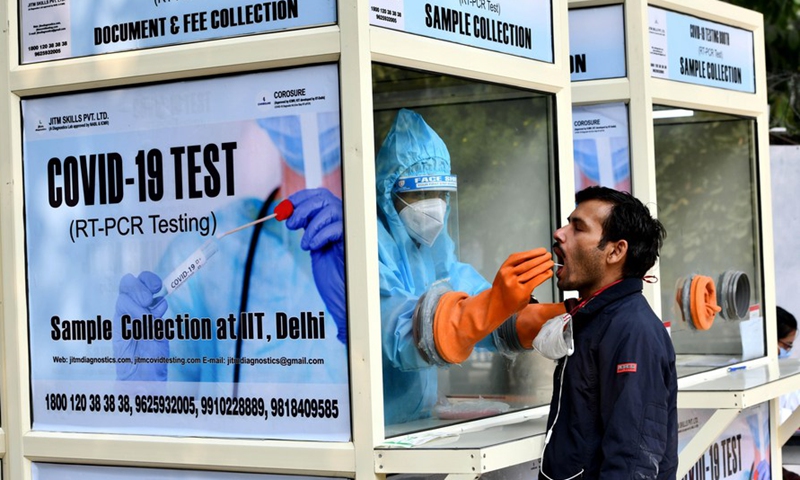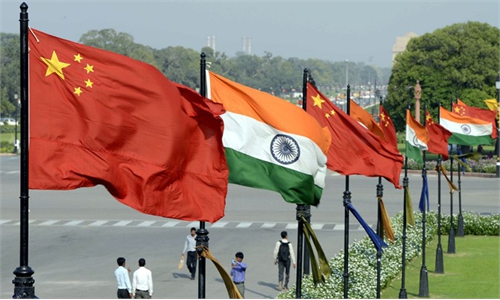COMMENTS / EXPERT ASSESSMENT
Wider wealth gap looms, dimming India’s economic recovery in 2021

A health worker collects a swab from a man during a COVID-19 test in New Delhi, India, on Nov. 6, 2020.File photo:Xinhua
The COVID-19 pandemic, a once-in-a-century global health crisis, has badly battered the global economy. With relatively better containment measures, Asia's emerging markets appear to be less hit by the outbreak. India, however, may be an exception, expecting economic contractions of more than 10 percent in 2020 and a wider wealth gap dimming its recovery path.
With over 10 million confirmed COVID-19 cases, the second largest number in the world, India seems to be facing a prolonged road to improve its economic prospect as the new year comes. According to IMF estimations in October, the Indian economy might have shrunk as much as 10.3 percent in 2020, comparing to the 1.7 percent contraction of the overall Asian emerging markets and developing economies.
Among a series of daunting fallouts caused by the virus, a widening wealth gap may be unavoidable for the populous South Asian country in 2021, and maybe for a much longer period. According to an earlier UN report, about 400 million people working in the informal economy in the country are at risk of slipping back or falling into deeper poverty due to the pandemic. This means the progress that India made in previous years to reduce poverty might be erased.
The distinct wealth gap is a long-lasting problem in India. Now with the deadly virus weighed in, it will be one of the critical barriers that Indian economy needs to tackle in order to resume momentum, while it is only one of the challenges that New Delhi facing in 2021.
Besides contracting domestic demands, and a darkening employment situation, India has been recklessly sabotaging its businesses environment for a period of time. Despite decades of strengthening economic ties with China, India, however, has seen rising confrontational attitude toward China. It has rolled out a series of measures to antagonize China throughout the recent years, especially in 2020. This ranged from provocations at the border to economic areas, including heightening scrutiny on Chinese investments and banning Chinese apps
However, as the only major economy which is expected to realize growth in 2020, China is recording increased outbound investments across the world. Meanwhile, Western economies are still struggling with resurgent COVID-19 infections, with a tepid pace of economic recovery which will dampen outbound investment of these countries.
As of 2019, Chinese accumulated investment in India exceeded $8 billion. Bilateral economic and trade cooperation with China has boosted the development of Indian industries such as mobile phones, household appliances, infrastructure, automobile manufacturing, medicine and biology, creating a large number of local jobs and providing massive cost-effective products to the Indian people, Chinese Ambassador to India Sun Weidong said at a video seminar in July.
Once the business environment is severely hindered, it's going to be hard for India to reverse and attract foreign capital back. Not to mention that the widening wealth gap may lead to continuing social uncertainties, such as farmer protests and labor strikes which have already emerged in the nation in 2020 amid the epidemic. The recent violent attack by employees at iPhone assembler Wistron's plant in southern India resulted in losses of up to $7.12 million, according to media reports.
At the end of the day, if it intends to resume momentum as a major emerging economy in the world, it is crucial for India to realize that it needs to get back on track to contain the virus and promote economic recovery practically. It should integrate better into the global economic operating system rather than blindly following US' protectionism and further sliding downward the geopolitical path which is clearly an unaffordable choice for the South Asian country and its over one billion residents.
The author is director of the Institute of Bay of Bengal Studies at Shenzhen University. bizopinion@globaltimes.com.cn


